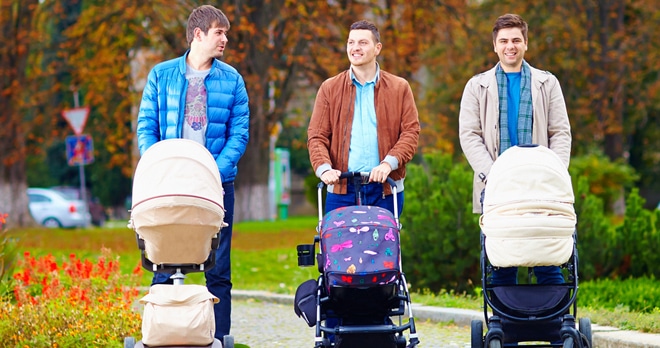Demand for Shared Parental Leave to rise in 2016

The number of staff applying for Shared Parental Leave is expected to rise over the next 12 months, according to a survey of 200 HR professionals and employers conducted in the run up to the first anniversary since the new laws were introduced.
Almost two-thirds (65 per cent) of the businesses that took part in the survey run by the employment law team at Withy King and recruitment consultancies Allen Associates, Henlee Resourcing & Consulting, and Juice Recruitment, said they expected staff to apply for Shared Parental Leave over the next 12 months. This contrasts sharply with just 24 per cent reporting take-up in the first year.
Over one-third (35 per cent) said they didn’t expect any take-up in 2016, a significant drop from the 76 per cent who reported no take up in 2015.
Helen Lucas, solicitor in our at Employment & HR team, which has principle offices in Bath, Swindon and Oxford, said: “Our survey reveals that there has been a very low level of take up of Shared Parental Leave since the new laws were introduced for working parents of babies born on or after 5 April 2015. This is expected to change in 2016, as more parents become aware of their options.
“Many of the employers we surveyed complained about the complexity of the new rules which some found ‘confusing’, as well as the large quantities of paperwork. They felt that a general lack of understanding on the part of both employers and employees might explain why take up in the first year has been so low.”
Kate Allen, managing director at Allen Associates, said: “This result seems to go some way towards allaying fears that traditional workplace cultures, stigmas and stereotypes will prevent fathers from taking time out from their jobs to look after a new baby. However, with so many other personal factors at play, it’ll be interesting to see whether Shared Parental Leave makes it feasible for more fathers to share in the care of their babies or if, in reality, this will still largely fall to mothers. Some of the survey respondents suggested that mothers will always want to look after their babies themselves if it is feasible for them to do so. Given time and opportunity, it’ll be interesting to see if this holds true.”
The majority of businesses surveyed (73 per cent) said applications for Shared Parental Leave were at the level they had anticipated – but 23 per cent said take-up was even lower than they expected.
Most (60 per cent) thought the main reason was loss of earnings, while 15 per cent said cultural perception or stigma might have been a factor and 9 per cent thought damage to career prospects might have played a role.
Helen Lucas added: “While external factors and personal circumstances will always be the major driver, it’s clear that employers can do more to level the playing field. It was interesting that 25 per cent of employers offered enhanced payments over and above the statutory requirements for normal maternity leave, but didn’t extend this to Shared Parental Leave. A disparity between the two schemes will clearly make one less attractive and in many cases, less viable.”
Over half (54 per cent) pay statutory entitlements for both shared parental leave pay and maternity pay; just 17 per cent offer enhanced Shared Parental Leave page at the same level as their enhance maternity pay scheme.
Lee Krawczyk-Brown, managing director at Henlee Resourcing, concluded: “While employers said take-up of Shared Parental Leave was likely to increase in 2016 and this is encouraging, numbers are expected to remain small with 59 per cent predicting applications from fewer than two per cent of their workforce.
“These survey results together with conversations we have had with both candidates and clients reveal there is still a lack of understanding on the part of both employees and employers as to what Shared Parental Leave is all about and what the options are,” he said. “As a result, we get the impression that many employers are not promoting Shared Parental Leave as much as they could. It’s clear there is still a lot more work to be done if this scheme is to be successful in the future.”